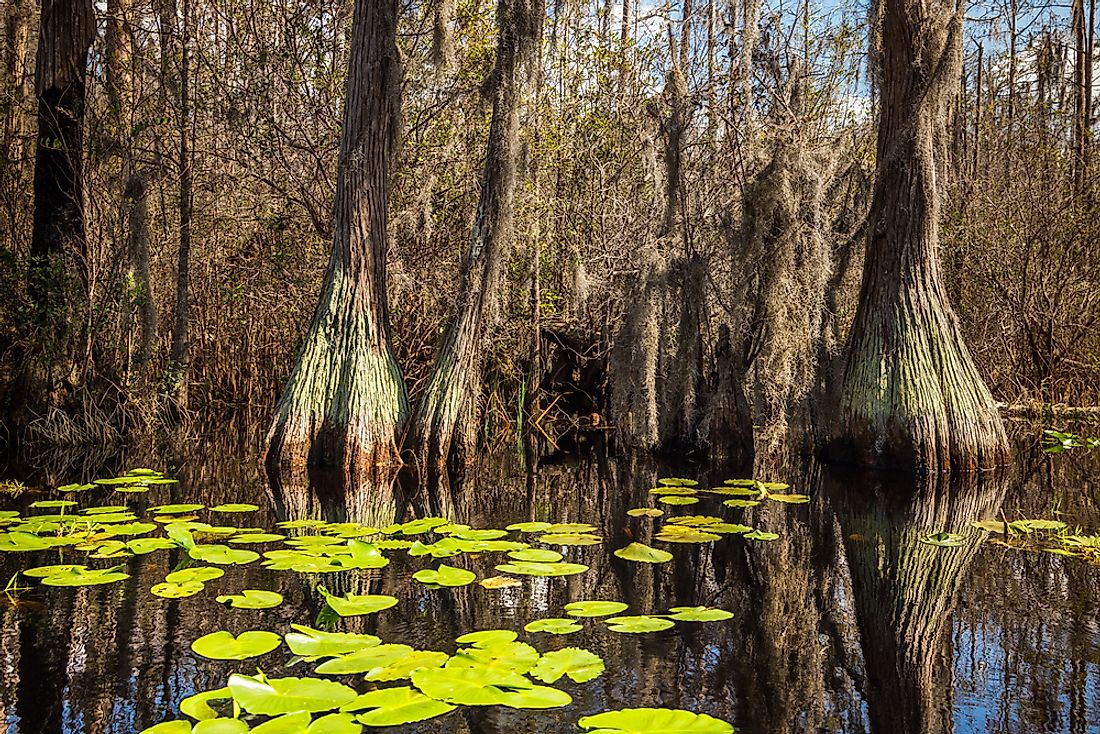The 11 National Natural Landmarks of Georgia

The state of Georgia is located in the South-eastern part of the US and was established in 1733 with a total area of about 59,000 square miles, and inhabited by around 10 million people as of the 2017 census. Georgia is home to an impressive 11 national natural landmarks that are famous across the country attracting hordes of visitors every year. These landmarks are usually designated through the National Natural Landmark program whose sole responsibility is to recognize and encourage the preservation of natural monuments across the United States. The program was established in 1962 by the then secretary of the interior Mr. Stewart Udall, and as of 2016, there have been more than 599 sites that have been added to the national registry through the program. Some of the natural landmarks found in Georgia include the following.
The 11 National Natural Landmarks of Georgia
Okefenokee Swamp
Okefenokee Swamp is considered to be one of the seven wonders of Georgia. Covering a total area of around 683 square miles, it is the largest Blackwater swamp in the North American region. The swamp is believed to have been formed 6,500 years ago through the accumulation of peat in a pre-existing basin over time. The area became home to loggers in the 1920s until it officially became a National Natural Landmark in 1974. More than 400,000 people visit the swamp annually from as far as Europe and Asia who are provided with guided tours as well as a refuge by the local service providers.
Wassaw Island
Wassaw Island is located in the Atlantic Ocean a short distance off the Georgian coastline. The island covers an area of about 15 square miles that is mainly made of marsh, tidal creeks, and mudflats. The island was home to Native Americans dating as far back as 500 CE. During the Civil War, it was used by the Confederate troops before a wealthy businessman George Parsons bought it. To keep the island from being developed and destroyed, the Parsons family passed the ownership of the island to the Georgian Nature Conservancy which designated it as a National Natural Landmark in 1967.
Panola Mountain
Panola Mountain sits on an area of about 100 acres between Henry and Rockdale Counties in the state of Georgia. Its highest peak stands at 946 feet above the sea level, and it is surrounded by a lush forest with the South River flowing at its feet. The area was for a while home to early settlers who were attracted by the availability of fresh water and terrain that offered a natural defense against invaders. Panola Mountain became a National Natural Landmark in 1980 and has ever since been a popular tourist attraction site for visitors providing kayaking, hiking, and camping experiences to the people.
New Landmarks
The fight to preserve nature is not slowing down. Every year more areas are being brought under the jurisdiction of preservation organizations across the states to counter the ravages of global warming and environmental degradation that have been the hallmarks of the last century. One such addition is the Wade Tract Preserve which was designated in 2013 to protect old species of the savanna pine. The conservancy covers an area of about 206 acres and is found in Georgia.
The 11 National Natural Landmarks of Georgia
| Rank | Name | Date | County | Ownership |
|---|---|---|---|---|
| 1 | Big Hammock Natural Area | 1976 | Tattnall | state |
| 2 | Camp E.F. Boyd Natural Area | 1974 | Emanuel | private |
| 3 | Cason J. Calloway Memorial Forest | 1972 | Harris | private |
| 4 | Ebenezer Creek Swamp | 1976 | Effingham | private |
| 5 | Heggie's Rock | 1980 | Columbia | county, private |
| 6 | Lewis Island Tract | 1974 | McIntosh | state |
| 7 | Marshall Forest | 1966 | Floyd | private |
| 8 | Okefenokee Swamp | 1974 | Charlton, Clinch, Ware | federal |
| 9 | Panola Mountain | 1980 | Rockdale | state |
| 10 | Wade Tract Preserve | 2013 | Thomas | private |
| 11 | Wassaw Island | 1967 | Chatham | federal |











